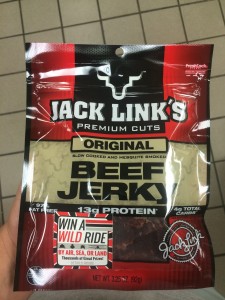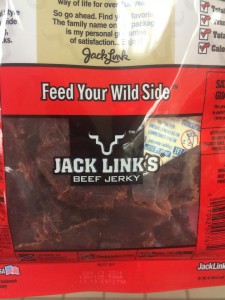I found this video while searching the web today. I think it applies directly with Randy Malamud’s Zoo Spectatorship. As Malamud prefers television networks with animals than the zoos, what would he say about the intentions of the Discovery Channel? I think he would be against this.
Author: Giovanni Girardi
https://www.youtube.com/watch?v=QaihEthj4qs
While searching on YouTube for wild animals, I came across this video of a human interacting with a wild Killer Whale. To be honest I did specifically type “killer whales in the wild” into the search bar, but it still counts. I couldn’t resist considering my love for the Orca species. The video, coming from YouTube, isn’t in the best quality. A simple phone camera can record videos and they are being posted on the web. In an instance where an average human being encounters and interacts with a Killer Whale, a simplistic recording device will suffice. In this video we see a human and a whale having a friendly match of tug of war with what seems to be some sort of branch or stick. Both the human and Killer Whale seem to be having a fun time as they experiment with each other, and testing their boundaries. They Killer Whale seem to be equally interested with the human, as the human is interested with the whale. We know that this is a friendly encounter between the human and Killer Whale because the proximity of the human’s hand to the Killer Whales mouth was close enough for the killer to bite off. Instead, the ginormous creature with a reputation of being ferocious (hence receiving the name “Killer Whale”) decides to gently grab hold of the stick and interact in a friendly manner. If you listen to human and killer whale are also imitating each other in the noises they make. As the human whistles at the whale, the killer whale projects his whistle, and the two try and match each other in pitch. Since this video was taken from what could be assumed average fisherman, the videography was the least of their concerns. Videoing the interaction by any means was good enough for proof of this amazing incident that had taken place. No music was added and no particular framing of the video. I will say that the person taking the video did a good job of capturing the happy look on the man’s face, as well as the playfulness of the killer whale as they interacted. There was no main point the videographer was trying to portray in this video. No changed were made by editing to makes us believe certain things. The things we see and take from this video are the true consequence of an interaction between human and an animal in the wild.
As I watched and analyzed this video I realized a couple of things. Out there in the wild, the Killer Whale and human were equals. Although humans have the capabilities to hunt and capture whales, this incident shows the true innocent and curious interaction of two species in the wild. Both the human and Killer Whale happened to find each other in the wild and we’re curious to what would happen when approaching each other. While realizing that the interactions are clearly consensual it made me relate to Randy Malamud’s essay Zoo Spectatorship. Randy Malamud commonly comments on the atrocities behind humans spectating animals in zoos, but I find it ironical that we see the animal spectating back. The Killer Whale has taken itself out of its natural course in a day to interact and view this human. We know the Killer Whale isn’t just playing, but spectating because of the Killer Whales actions. The popping up of the head, then lowering back down to view the human is a technique, used by all Killer Whales, known as “spy hopping”. I find it interesting that while Randy Malamud’s essay notes the unreciprocated look from animals, we find an instance where the look is reciprocated, and perhaps even initiated.
As I strolled through Wawa in search of a potential package to photograph, I came across a Jack Links Beef Jerky package. There is an image of a bull on the front and back of the package. The black outline of a bullhead is the well-known logo for Jack Links Beef Jerky. The animal is depicted in a masculine manor. An emphasis on the head and especially including the horns in the logo gives us a feeling of strength and toughness. Jack Links Beef Jerky marketing definitely targets men of all ages. The bullhead is pinnacle for men to believe that if they eat this product they too will become tough and strong like a bull. The image also takes on a phallic look, more so targeting the male gender and the concept of mascunlinity. The terms Jack and Jerky are relatable by men because it may suggest a euphemism for masturbation. The animal isn’t really doing much in this image. We don’t even see the face of the bull just the black outline as a logo, and there is not real setting. Perhaps this is to detach the buyer’s thoughts from what they are specifically eating (an animal) instead of the concept of what they are eating. The animal is being represented solely as a product, to be used for instrumental purposes only. John Berger would also recognize the animal being used for its instrumental value as seen in his essay Why Look At Animals?
Jack Links Beef Jerky package. There is an image of a bull on the front and back of the package. The black outline of a bullhead is the well-known logo for Jack Links Beef Jerky. The animal is depicted in a masculine manor. An emphasis on the head and especially including the horns in the logo gives us a feeling of strength and toughness. Jack Links Beef Jerky marketing definitely targets men of all ages. The bullhead is pinnacle for men to believe that if they eat this product they too will become tough and strong like a bull. The image also takes on a phallic look, more so targeting the male gender and the concept of mascunlinity. The terms Jack and Jerky are relatable by men because it may suggest a euphemism for masturbation. The animal isn’t really doing much in this image. We don’t even see the face of the bull just the black outline as a logo, and there is not real setting. Perhaps this is to detach the buyer’s thoughts from what they are specifically eating (an animal) instead of the concept of what they are eating. The animal is being represented solely as a product, to be used for instrumental purposes only. John Berger would also recognize the animal being used for its instrumental value as seen in his essay Why Look At Animals?
 If Jonathan Foer, author of Eating Animals, were to analyze this package, I could assume the numerous assumptions he would make about it. When seeing the image of the animal he would be curious to what type of animal the beef is coming from? As the image seems to depict a bull, he may argue that the company is unsentimental towards animals since we can’t directly identify what animal is in the logo. He could argue the animal may be some other beef processed animal like a cow. He would than most likely question how this animal was farmed, factory or family? Or he might not even bother with that question considering he believes soon enough the term factory farm will fall out for a few reasons. First in his hopes that there will be no more factory farms, or second that there will be no family farms to compare them to. Foer would want to know whether the meat was Kosher or not. Coming from a Jewish heritage and especially the consequences his grandmothers endured during the war, this would be important. Kosher would be defined as that if humans must eat animals, it is done respectfully and free of suffering. Foer would probably agree that along with this package comes a familiar story. Its the same story the male gender has been told about eating meat since we can remember. Eating meat makes you big and strong. I can remember my nonno (italian for grandfather) would always tell me to eat a lot of meat and I will become a strong man like him, then he would flex his arm. Whether its the stories we are told, or what the media projects, eating meat has always been seen as a form of masculinity.
If Jonathan Foer, author of Eating Animals, were to analyze this package, I could assume the numerous assumptions he would make about it. When seeing the image of the animal he would be curious to what type of animal the beef is coming from? As the image seems to depict a bull, he may argue that the company is unsentimental towards animals since we can’t directly identify what animal is in the logo. He could argue the animal may be some other beef processed animal like a cow. He would than most likely question how this animal was farmed, factory or family? Or he might not even bother with that question considering he believes soon enough the term factory farm will fall out for a few reasons. First in his hopes that there will be no more factory farms, or second that there will be no family farms to compare them to. Foer would want to know whether the meat was Kosher or not. Coming from a Jewish heritage and especially the consequences his grandmothers endured during the war, this would be important. Kosher would be defined as that if humans must eat animals, it is done respectfully and free of suffering. Foer would probably agree that along with this package comes a familiar story. Its the same story the male gender has been told about eating meat since we can remember. Eating meat makes you big and strong. I can remember my nonno (italian for grandfather) would always tell me to eat a lot of meat and I will become a strong man like him, then he would flex his arm. Whether its the stories we are told, or what the media projects, eating meat has always been seen as a form of masculinity.
As you can see I choose the image of a human-tiger encounter, at what seems to be some sort of circus. The first thing I noticed was that the human who is most likely the tamer is giving the tiger a kiss. To our knowledge what’s typically known as a ferocious and dangerous animal, the tiger is accepting the kiss without any hesitation. Both the human and tiger appear to be reaching out for the peaceful gesture. This isn’t how a tiger would act in the wild, which makes sense that my next observations of the picture told me what it did. There is a black cage surrounding the two, with a blackened background, but a spotlight being shined onto the two. Clearly this is a circus and the tiger has been trained to preform at the humans command. The last thing I recognized as I closely examined the photo was the whip behind the humans back. The tiger is trained well enough to kiss the human but there is still a form of superiority represented by the whip. It may also serve as a division between the two species.
sort of circus. The first thing I noticed was that the human who is most likely the tamer is giving the tiger a kiss. To our knowledge what’s typically known as a ferocious and dangerous animal, the tiger is accepting the kiss without any hesitation. Both the human and tiger appear to be reaching out for the peaceful gesture. This isn’t how a tiger would act in the wild, which makes sense that my next observations of the picture told me what it did. There is a black cage surrounding the two, with a blackened background, but a spotlight being shined onto the two. Clearly this is a circus and the tiger has been trained to preform at the humans command. The last thing I recognized as I closely examined the photo was the whip behind the humans back. The tiger is trained well enough to kiss the human but there is still a form of superiority represented by the whip. It may also serve as a division between the two species.
Before reading John Berger’s “Why Look at Animals?” I would have viewed this image as harmless. It seems like there is a good relationship between the human and the tiger. The tiger must like the human enough to share a kiss with him. I also wouldn’t have seen the wrong doing to the species of Tigers in performances like such. I would have deemed this circus as entertaining for majority of humans before reading Berger.
Now that I have read Berger’s essay, I can say that images like this one is not all that meets the eye when we look at interesting animals like the Tiger. I don’t agree that humans should be putting animals of any species in zoos or circuses. It is only hurting the species. Berger’s essay tells us the vast history of human and animal relationships. As you may or may not know, tigers are an endangered species. Humans have felt the need to use Tigers for several different reasons, and barely any are to the species benefit. According to Berger “The commercial exploitation of certain species (bison, tigers, reindeer) has rendered them almost extinct. Such wild life as remains is increasingly confined to nation parks and game reserves” (p. 13). If we care about tigers or any commercialized animals we find so much interest in, we must not interfere with their ways of living, because they won’t be around much longer for us to admire.
Sources for post:
Berger, John. “Why Look At Animals?” About Looking. New York: Pantheon, 1980. Print.
“Dragons Circus Review.” The Peanuts Gang. Web. 22 Sept. 2014
 My name is Giovanni Girardi. I am a junior and I am an economics major. I have recently transfered into Lafayette College from Hofstra University this semester. I am also fortunate enough to have a spot on the lacrosse team here. A major component in transferring was picking a school where I would see time on the field, but also recieve a better education, and Lafayette seemed like the perfect place.
My name is Giovanni Girardi. I am a junior and I am an economics major. I have recently transfered into Lafayette College from Hofstra University this semester. I am also fortunate enough to have a spot on the lacrosse team here. A major component in transferring was picking a school where I would see time on the field, but also recieve a better education, and Lafayette seemed like the perfect place.
I choose this class because animals, particularly dogs have been a part of the Girardi household for a long time. My family and I own a dog named Cocoa, and she is a Puggle. A Puggle is a mixed breed of a Pug and a Beagle. In May of 2006 Cocoa became a part of the Girardi family. Before Cocoa we owned a dog named Rocky who was a Cavalier King Charles Spaniel . Unfortunately Rocky passed away in 2004 due to cancer at only 5 years old. Luckily my Puggle has lived passed that age and is now 8 years old (in human years that is)! My brother Nicholas and his wife own two dogs. Their oldest dog is a Mini-Pincher named Primo, he’s 3 years old. The youngest is a Chihuahua named Giulia and she is 2.
. Unfortunately Rocky passed away in 2004 due to cancer at only 5 years old. Luckily my Puggle has lived passed that age and is now 8 years old (in human years that is)! My brother Nicholas and his wife own two dogs. Their oldest dog is a Mini-Pincher named Primo, he’s 3 years old. The youngest is a Chihuahua named Giulia and she is 2.
As dogs play a big role in my family, so does spending time with my family. Besides my brother Nicholas, I have two sisters Maria and Giuseppina. The newest addition to our family is sister in law Samantha. As I said earlier, my brother is married. The wedding took place in Long Island, New York just this past summer in June. If my name as well as my siblings’ names hasn’t given it away by now, I come from a typical Italian family. My mother Filippa was born in Sicily. She immigrated to America with her parents and three sisters in 1969. My father Florestano was born in America, but has not strayed away from his Italian heritage what so ever. I enjoy spending time with my family, as family means a great deal in Italian culture. Whether its eating my mothers infamous Sunday dinners or just talking and telling funny stories, the Girardi family always enjoys spending time with one another. I look forward to getting to know everyone much better this semester as well as reviewing and commenting on your blogs!
Recent Comments